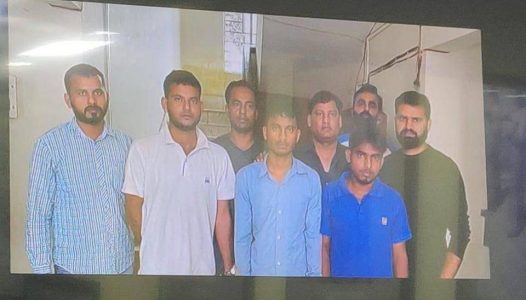
FBI analysis shows average lone terrorist looks a lot like Dylann Roof
The FBI has released a comprehensive overview of the lone terrorists who’ve committed attacks in the past four decades, painting a portrait of an offender who closely resembles Dylann Roof.
The findings aren’t a surprise to law enforcement. The 52 terrorists the FBI had significant data on are all men and mostly white, with histories of criminal behavior and hatred.
Like Roof, about half were single, used drugs, had been arrested several times and lacked steady employment.
From 1972 to 2015 — the year Roof murdered nine worshippers at Emanuel AME Church in Charleston — each of the subjects worked alone to plot attacks against the public.
Roof, 25, was convicted of 33 federal and 13 state charges stemming from the massacre, and sentenced to death.
“One key concept is there is no one demographic profile,” said Special Agent John Wyman, chief of FBI’s Behavioral Threat Assessment Center, which conducted the research.
“As a result, there’s no checklist or score sheet someone can use to say whether this person’s a threat or not,” he added.
That means every threat has to be taken seriously, Charleston County Sheriff Al Cannon said.
Cannon’s department is already following most of the report’s recommendations for law enforcement agencies, including being receptive to online tips and building relationships with mental health professionals who may notice warning signs in their patients.
“The key to a lot of this is good communication among the various stakeholders that come into play,” Cannon said.
The numbers that stuck out to Cannon came late in the report: an accounting of the warning signs the attackers displayed to friends, family and bystanders before striking.
Like over half of the offenders, Roof flaunted his racist views in person and online, including a drunken rant to a childhood friend who didn’t report the threat. A judge sentenced that friend, Joey Meek, to 27 months in prison for misprision of a felony and lying to investigators, saying his omission could have allowed Roof to kill more more victims before his arrest.
Like 94 percent of the offenders, Roof steeped himself in hateful communities for more than a year before he began plotting the shooting. And like over a quarter of those attackers for whom the FBI could reconstruct a timeline of plans, he prepared between a month and a year before carrying out the massacre.
Forty-eight of the 52 offenders in the study publicly shared grievances against the ethnic, racial, religious or government groups they would go on to attack. Over 60 percent of them openly said they’d support violence that furthered an ideology, and a quarter of them bragged about preparing or planning for an attack. Only nine — 18 percent — discussed specific plans.
Fifty of the attackers wrote or made videos about their attacks. Like Roof, 40 of them wrote letters intended to be read after the attacks, and 24 posted about their grievances online.
The Security Analysis Unit, which includes officers from the FBI crime analysis unit, examines a slew of tips from people worried about family, friends, co-workers or internet posts. They work with an embedded psychologist to gather tips.
“The takeaway for me from this is just how important it is to reinforce to the public that they have a role to play in this, and that the possibilities are so huge that we really need help,”
Source: Daily Sabah





